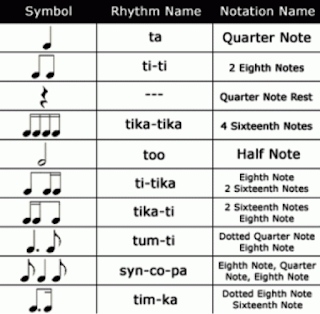The Whistle or Flageolet Register
The
Whistle or Flageolet Register is the highest register of the human female
voice. When present, this register occurs above the Head Voice register. This register gets its name from the timbre
of the production of the notes in this range; they sound similar to a whistle,
as opposed to the lighter Head Voice and the much warmer Modal or Chest
Register. Tones in the Whistle or
Flageolet Register take on flute-like, bell-like, even crystalline qualities
that can even border on being shrill until worked with or practiced
regularly. This register, like all of
the registers, does not begin in a set place or on a specific note but that
note is usually around “High C” of C6 at 1,046.5 Hz. This area typically extends as much as an
octave or to approximately two Ds above High C to D7 at 2349.3 Hz. Of course, there are a few unusual cases that
extend much higher or lower than these pitches.
It is also possible for some sopranos to sing above High C without
engaging the Whistle Register; many sing as high as F6 or even B7 without
switching into the Whistle Register.
Classical singer, Mado Robin holds the record for the highest recorded
note ever sung. You can hear her on
YouTube at https://www.youtube.com/watch?v=32hdZaQi4-I. Check it out.
There
are many unanswered questions about the physiology of Whistle Register
production as it is difficult to film the Vocal Folds. Evidently the Epiglottis closes over the
Larynx causing the resonating area to be the smallest of all the registers. Only the very front or anterior portion of
the Vocal Folds vibrates during the production of this register. I realize this information is extremely
technical but honestly, if you sincerely want to understand your voice and
build its registration, it is very important to understand HOW to achieve these
results.
The
Crico-Arytenoid Muscle is responsible for the physiological production. However, the entire muscle is not
active. When you are dealing with such
incredibly fine motor activities, a VERY limited amount of space, and so much
“responsibility” for other whole body work, the component parts are tiny but
have unique and unequivocal assignments.
The Lateral Crico-Arytenoid Muscles (along the sides of the Larynx) are
actively functioning. The Transversus
Crico-Arytenoids (the triangular portion of the Muscle running horizontally
between the two Lateral Crico-Arytenoids) are completely inactive. Amazingly, the limited vibratory space
actually makes production of the high pitches easier.
You may
think the Whistle Register is only for women but Countertenors and some Tenors
can also develop this area with proper training. Australian pop singer, Adam Lopez, is in the
Guinness Book of World Records as having sung the highest recorded MALE vocal
note of an Eb8. This note is actually so
high, it is three half-steps or semitones above the end of a full
keyboard. You can hear Mr. Lopez’s very
impressive vocal range of approximately SIX octaves at
https://www.youtube.com/watch?v=pc3Xg2o26IE. See what you think; it’s pretty incredible!
How
could you ever use a Whistle Register?
In Classical music, Coloratura Sopranos would only access this register
and sometimes they simply use an extended Head Voice or Falsetto sound. Usually the Whistle Register is utilized to
sing staccato notes or passages in rapid succession such as the rapid passage
of A7s in the Queen of the Night’s aria in Mozart’s “The Magic Flute.” These notes must be articulated accurately
but delicately; this is not a passage requiring power but precision. The Whistle Register production is perfect
for ornamentation, trills, and those precise, staccato phrases. In Western pop music, singers use the Whistle
Register to “Wow” their audiences with higher pitches and other ornamental
“riffs”. The best-known practitioners of
the Whistle Register in recent years have been Minnie Riperton, Deniece
Williams, and, of course, Mariah Carey.
Thanks
for reading this post! I hope you are
gaining more perspective and appreciation of your own vocal registers, and
ideas for new goals you want to pursue with your voice teachers. If you have any questions about my lessons
and about me, check out my website at www.SingitForward.net. As always, I love getting your questions,
comments, and/or suggestions for future blog post topics. No question is too dumb, ever! Thanks again!
Sing it Forward!


Comments
Post a Comment